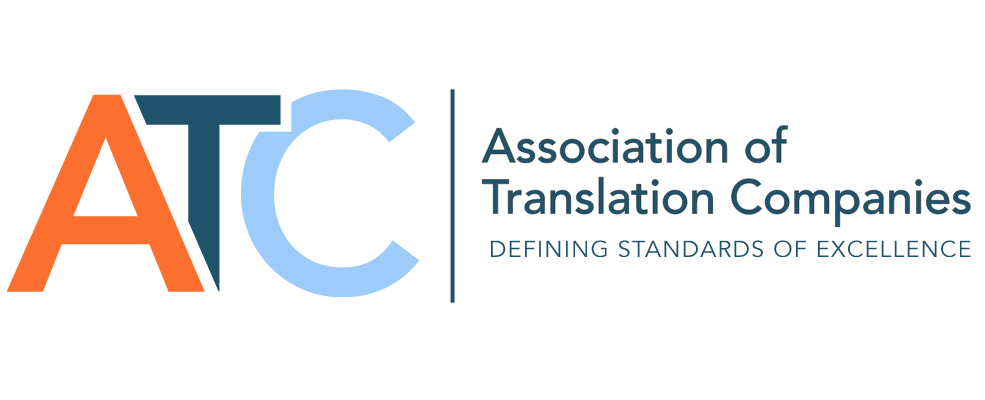ATC Loc Lessons Podcast Down-to-earth conversations with industry voices on the trends shaping translation, localisation…

Having material localised is essential for any company looking to expand into different countries. No matter the industry there will always be a need to manipulate the content to fit the target population, whether it is a product, business, movie, e-learning etc. To be effective this must be done right and not just translated.
So how do you achieve successful localisation?
First of all it is important to understand what localisation actually is. In short, localisation is altering content for a different locale or population. The most obvious example of this when working internationally is translating content. However, localisation does not stop at translation, it also includes…
-Changing images, graphics or colour schemes
-Altering content to match the desires of the population
-Accurately inputting translated material that may vary in size
-Converting to the target demographics units e.g. kilometres, currency etc.
-Using the correct formatting for dates, times etc.
-Meeting legal and cultural requirements
The best way to successfully localise your content is to work with a translation and localisation provider, who can localise each part of your project whether it is websites, video or printed material. To make this process run smooth and efficiently It is important to consider the following things before diving into localisation.
Planning:
First things first, languages.
Put your selected languages into stages (either in similar groups or by importance).
Stage one: French, German and Italian
Stage two: Chinese, Japanese and Korean etc.
Focusing on fewer languages will help the quality checking process. This will allow an improvement in work flow and highlight any areas that may need editing for the localised version to work.
Next, find your range.
Identify what does and doesn’t need localising.
Audio, video, text, images, tables, screenshots, logos and names are just a few things to consider.
Have any of these things been translated or localised previously? If so, compile a glossary with them all in, this will help your localisation provider. Often brands are already used in the target country, therefore they probably don’t need localising. Selecting anything that doesn’t need to be localised saves time and money.
Make an Estimation
Estimate the word counts and timing for the audio, video or text.
Prices for localisation are often done by word count. Knowing these can help your localisation service provider give you an accurate quote. Little things like this are often overlooked by companies and it basically means more work for the localisation provider and therefore more time and money.
Development:
Now consider your design
Changing languages can cause havoc with the design of your content.
To avoid this, limit the text on images and in videos. Also, consider that text expands in different languages, on average by 20-50%. Furthermore many languages only ‘work’ in certain fonts and formats. If your original content contains all manner of fonts, italics, colours and even bold text the process of localising this will be much more difficult. So it is best to keep it simple if you know it will be localised at a later date.
Save, time, money and effort.
Can you provide the correct source material to be localised?
When providing content to be localised the editable source content is vital to make the whole process easier and therefore quicker and cheaper. If you have an English version already the easiest thing is to provide the source material which can then be altered.
Keep it cultural.
Countries have different views and beliefs on many things. Some are not all obvious.
Things such as colours, pictures, signs, gestures and symbols are all important to consider to make the localisation accurate because the last thing you want to do is cause offence.
In addition, some colloquial language and acronyms etc. wont translate directly, this causes issues if there are specific phrases or terms used for your product. A lot of phrases etc. are only relevant in their own specific culture and will be ‘lost in translation’ in other languages.
Listen to the pros.
Just because a person can speak a language doesn’t mean they can be a voice over artist. If you require voice-overs make sure you sample various artists and ensure that they fit your specific needs. Does their personal sound portray what you want it to?
Review:
Finally, test the content.
Review the validity of the localisation, is it achieving what it set out to achieve? Does it still portray the same message? There is no point localising materials if the message is lost or confused.
Double check the translations, no translator is 100% perfect and often words can have multiple meanings or can be interpreted differently. As a result, getting a second opinion on translations is essential.
Ensure that the product is user friendly, can the desired people access it. Make sure that this is across different platforms that may be used, e.g. PC, mobile, Mac. In addition is it available across different internet browsers?
The modern globalised world demands localisation, any think that needs to transcend across different countries and cultures needs to be localised effectively. Many people think simply translating material will suffice but this is not the case. In addition many people fail to understand the requirements to successfully localise something and therefore the above tips should be followed. You can avoid ineffective localisation by hiring experts that control all aspects of the localisation process for you. The key to this relationship comes down to good communication, if you can go through the factors above with your provider the process will be much smoother and inevitably more successful.
Website Address: http://adelphistudio.com/
Twitter Account: https://twitter.com/Adelphitrans



